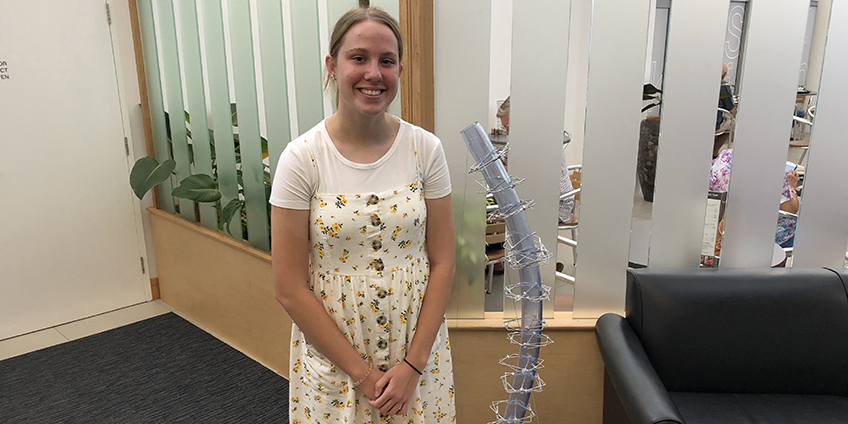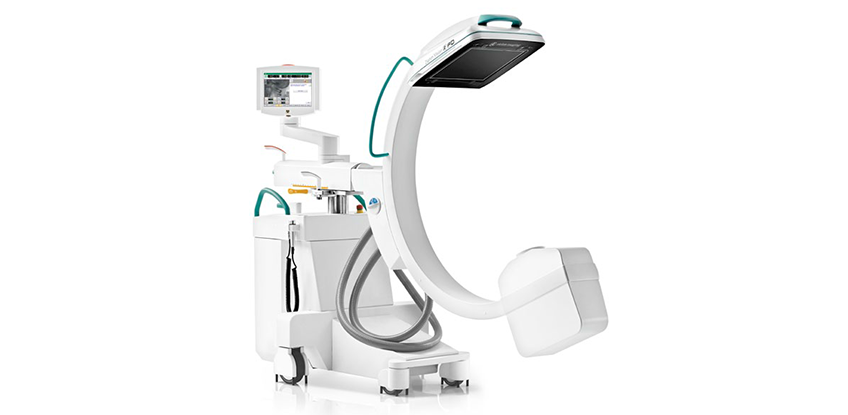
School artwork showcases spinal disorder
A high-school art project has drawn attention to spinal conditions and an amazing new machine being used at The Friendlies.
2019 Senior Rhys Crook created the wire and pipe spine, titled Crooked, as part of a school project.
“We had a self-portrait unit to do and I was looking at my physical being,” Rhys explained.
“I’ve had scoliosis for three years now, so that’s a big part of me and something that will never change, so the spine idea was born.”
Rhys said she spent hours wiring the time-consuming piece together.
“I spent hours moulding the squares around the pieces of plastic and then wiring it all together,” she said.
Her hard work paid off, receiving top marks and being selected to display the piece at the Emerge Combined High Schools Exhibition.
It was here the piece caught the attention of spinal surgeon Dr Jacob Van der Westhuizen, who was so taken with the piece, he asked if he could purchase it.
The piece has been on display in The Friendlies foyer for the past few months until it finds its permanent home in Dr Van der Westhuizen’s rooms.
Dr Van der Westhuizen said he loved the piece and it was a great talking point to raise awareness of spinal conditions, and highlight the services available in Bundaberg.
Recently I-Med Radiology Bundaberg introduced 3DII – an innovate new scanning device that delivers precise 3D views of anatomy. The machine is utilised by a range surgeons, but is particularly useful for orthopaedic surgery such as spinal surgeries, like the ones performed by Dr Van der Westhuizen.
The 3DII allows surgeons to see, in 3-dimensional planes, the position of anatomy in relation to surgical screws and plates, allowing for repositioning during the surgery. This improves confidence and precision for the surgeon during the surgery, and reduces the need for post-operative scans and corrective surgeries – which is a better outcome for the patient.
The mobile 3D C-arm offers high-quality imagery with minimized x-ray exposure, meeting the demands among local surgeons and improving quality of care for patients, staff and surgeons.
Specialised features of the 3DII include 3D reconstructions created by processing 180° of scanned information. This results in clearly distinguishable anatomical imagery, supporting orthopaedic, trauma and spinal interventions.

The 3D rotational image intensifier combines 2D excellence with advanced 3D technology, giving precise information from every angle. It helps to avoid unnecessary postoperative CT scans and corrective surgery, improving surgical outcomes and patient satisfaction.